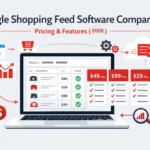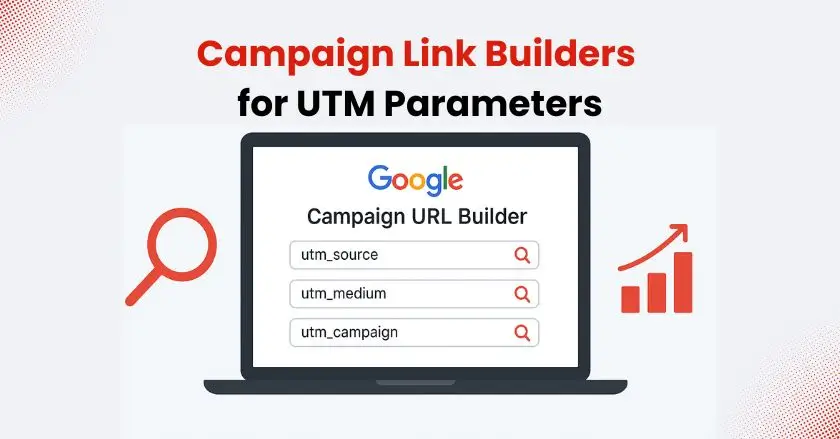
Do you know which sources bring visitors to your website and which campaigns give the best results? After running many social media campaigns, I learned something important: UTM links are crucial for understanding what drives your results. Without them, you’re basically marketing blindfolded.
In this blog post, you’ll learn how to use campaign link builders to create UTM parameters. They deliver actionable insights for your marketing campaigns.
Short Summary
UTM parameters are tracking codes in URLs. They show which marketing campaigns bring traffic to your site. You can use a tool like Google’s Campaign Link Builder to create tagged URLs. These URLs give you detailed insights into your traffic sources, campaign performance, and user behavior. This data is key to improving your digital marketing strategy. It ensures you gain the maximum value from what you’ve invested.
Understanding UTM Parameters
Definition and Purpose of UTM Parameters
UTM parameters, or Urchin Tracking Module, are text bits added to a URL. They help you track how well your marketing campaigns are working. Tracking codes show up as a query string after your main URL. They hold details about where your traffic comes from.
When a person clicks a UTM-tagged link, the parameters are sent to your analytics platform. This is usually Google Analytics 4, where it records the data as campaign info. This system shows you which social media posts, email newsletters, or digital ads bring the most valuable traffic to your website.
The beauty of UTM tracking lies in its simplicity and universality. UTM tags work well on all marketing channels. Whether you’re using Facebook, Instagram, LinkedIn, or email campaigns, they help track your efforts.
Importance in Digital Marketing
From my work with social media campaigns for different brands, UTM parameters really improve how we see campaign performance. Without proper UTM tracking, you may think your Instagram campaigns are weak. In reality, they could be your best traffic sources. You just can’t see it in your analytics.
UTM parameters offer valuable insights. They guide decisions on resource allocation and help enhance campaigns. They help you find the social media platforms that bring the best traffic. Also, they explain how different marketing channels connect in the customer journey.
For social media marketers and bloggers, this detail is key. It helps prove ROI and improves future campaigns. You no longer have to guess what your audience likes. Now, you receive clear data on what boosts engagement and conversions.
What Can Campaign Parameters Track?
Social Media Campaigns
Social media platforms are perfect for UTM tracking because each post, story, or ad can have its own unique tracking code. I’ve used UTM parameters to track everything from Instagram story links to LinkedIn article shares.
Key tracking opportunities include:
- Individual social media posts across different platforms
- Stories and temporary content
- Bio links and profile CTAs
- Paid social media advertising campaigns
When tracking social media campaigns, you can tell organic posts apart from paid promotions. You can also compare performance across platforms. This helps you see which content types bring the most valuable traffic to your landing pages.
Email Marketing Efforts
Email marketing campaigns benefit tremendously from UTM tracking. Every newsletter, promo email, or automated sequence can have UTM parameters. These show how your email subscribers engage with your content.
I recommend you create unique UTM codes for various email types. These include weekly newsletters, product announcements, abandoned cart emails, and re-engagement campaigns. This level of detail helps you see which email content performs best. It helps you adjust your content strategy to achieve improved results.
Online Advertising Performance
Digital advertising campaigns on Google Ads, Facebook Ads, and other networks need careful tracking. This helps optimize performance and manage ad spending well. UTM parameters let you track which campaigns are driving visitors to your site. They also reveal which ad versions and targeting choices deliver the best results.
This information is significant in running A/B testing campaigns. It also helps you improve your target CPA on various advertising platforms.
How Do UTM Parameters Work?
Components of a UTM Parameter
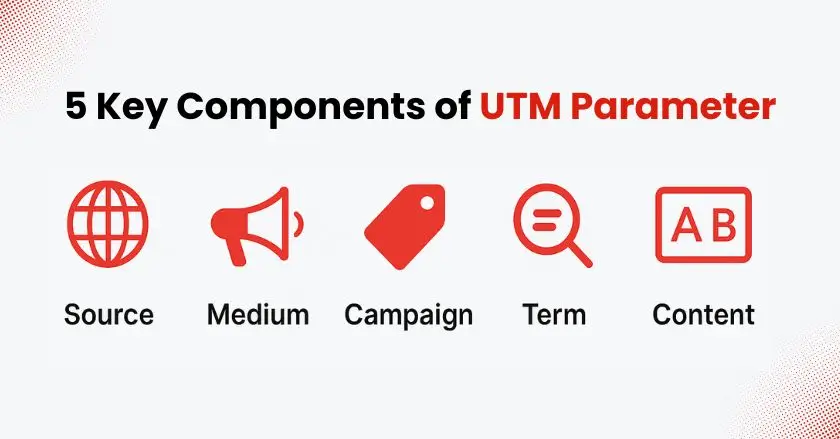
UTM parameters consist of five main components, though not all are required for every campaign. Grasping each element lets you design stronger tracking systems for your marketing campaigns.
The required parameters include campaign source, campaign medium, and campaign name. Optional parameters include campaign term and campaign content. These add detail for specific uses, like paid search campaigns or A/B testing different ad variations.
UTM parameters are set in a defined structure, which includes utm_source, utm_medium, utm_campaign, utm_term, and utm_content. Parameters are placed in the URL as part of a query string, with each one divided by an ampersand.
Building Blocks: Source, Medium, Campaign
Campaign Source shows where your traffic comes from. This includes Facebook, Google, newsletters, and other websites or platforms. This is your most important parameter because it tells you which traffic sources are driving the most valuable visitors.
Campaign Medium describes the type of marketing channel you’re using. Common examples include social, email, cpc (cost-per-click), display, or referral. This parameter lets you evaluate how well various marketing channels are performing.
Campaign Name is your internal identifier for the specific campaign you’re running. I usually pick clear names like “summer_sale_2025” or “new_product_launch.” This helps me find campaigns easily in my analytics later.
Step-by-Step Guide to Using Campaign Link Builders
Overview of Popular Tools
Google’s Campaign URL Builder is the most popular tool. However, many other platforms also let you build UTMs.
Here are some popular options:
- OWOX UTM Builder
- Raventools URL Builder
- Triggerbee Link Creator
Each one has special features to meet various marketing needs.
Many social media marketers and bloggers find that Campaign Link Builder has all they need for UTM tracking links. It’s simple, reliable, and integrates seamlessly with Google Analytics 4.
Using Google’s Campaign Link Builder
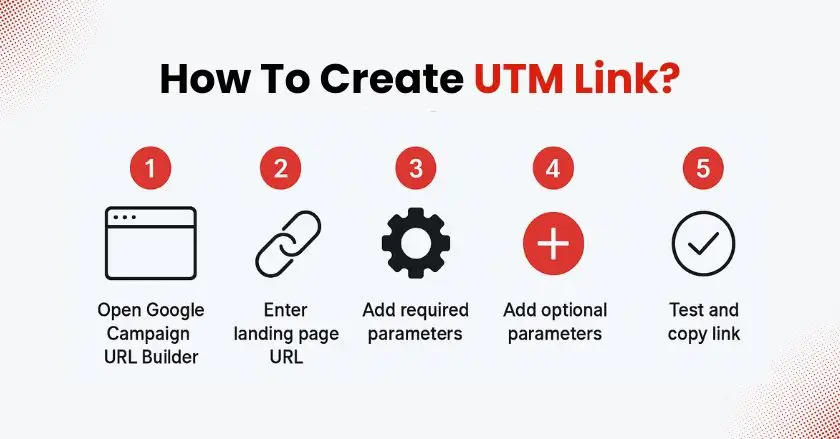
Here’s my step-by-step process for creating UTM parameters using Campaign URL Builder:
- Navigate to Google’s Campaign URL Builder – Find it through a quick Google search or bookmark the direct link for easy access
- Enter your URL – This is the landing page where you want to send traffic
- Fill in the required parameters – Add your campaign source (Facebook, Instagram, newsletter), medium (social, email, cpc), and campaign name
- Add optional parameters if needed – Include campaign term for paid search keywords or campaign content for A/B testing
- Generate and test your URL – Copy the generated link and test it to ensure it works properly
Always test your UTM links before launching campaigns. I’ve learned this the hard way when a typo in a campaign name made it impossible to properly track a major product launch.
What Are UTM Campaign Best Practices?
Consistency in Naming Conventions
Consistent naming conventions are crucial for meaningful campaign tracking. I suggest setting up a standard system for your team. This should include rules for capitalization, spacing, and abbreviations.
Use lowercase letters and underscores instead of spaces. For example, write instagram_story, not “Instagram Story.” This prevents data fragmentation in your analytics platform, where “facebook,” “Facebook,” and “FACEBOOK” would appear as separate traffic sources.
Document your naming conventions and share them with anyone who creates UTM links for your organization. This keeps your marketing campaigns consistent. It also makes reporting more accurate.
Avoiding Common Mistakes
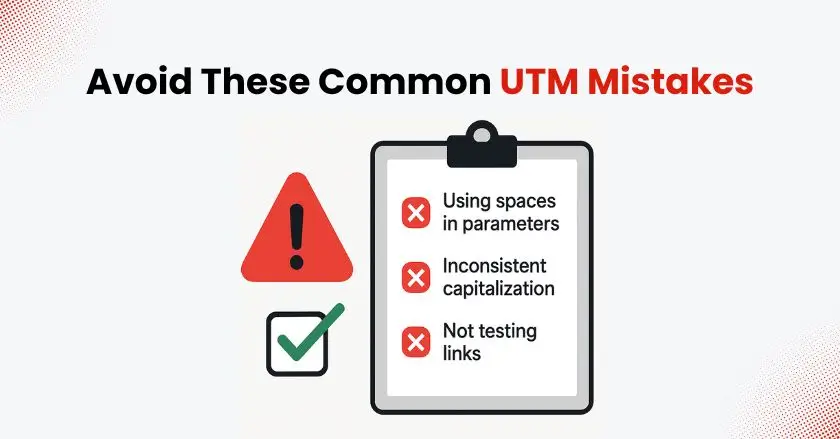
Common UTM mistakes I’ve encountered are:
- Using spaces in parameter values
- Inconsistent capitalization
- Forgetting to test links before campaigns launch.
These issues can significantly impact your data quality and campaign reporting.
Another frequent mistake is overcomplicating UTM structures. Keep your parameters simple and focused on the information you’ll use for optimization. Complex naming schemes often lead to errors and make data analysis more difficult.
Avoid adding UTM parameters to links that direct users to other pages within your own website. This can disrupt your analytics data and lead to attribution errors. As a result, it becomes harder to identify your actual traffic sources.
Integrating UTM Tracking with Analytics Platforms
Setting Up with Google Analytics 4
GA4 handles UTM parameters in a different way compared to Universal Analytics. It offers better campaign tracking and attribution modeling. GA4’s Traffic Acquisition reports show how well your UTM-tagged campaigns are doing.
To access your UTM campaign data in GA4:
- Navigate to Reports > Acquisition > Traffic Acquisition
- Look for the session source/medium and the session campaign dimensions.
- Use the GA4 Realtime Report to see UTM data from active campaigns.
Integrating UTM parameters with Google Analytics 4 gives you valuable insights. You can learn about user behavior, conversion paths, and campaign performance. This knowledge allows you to enhance and refine your marketing approach.
Benefits of Comprehensive Tracking
Using detailed UTM tracking helps turn unorganized marketing activities into a clear, data-focused strategy. When every campaign uses proper UTM parameters, you can see the complete customer journey from first touch to conversion.
This insight aids in multi-touch attribution. It also helps with budget allocation and finding the best marketing channels to use together. For businesses with campaigns on different social media and email, this combined view is key for improvement.
Advanced Tools for Campaign Automation:
Using Automation for Efficiency
Campaign link automation saves time and reduces errors when managing multiple marketing campaigns. Tools like Google Tag Manager can add UTM parameters to specific links automatically. Also, some social media management platforms have built-in UTM builders.
For large campaigns, use URL shorteners. They keep UTM data and make links cleaner and easier to share. This method helps with social media posts. Long URLs can hurt engagement.
Marketing automation platforms often have UTM building tools. These tools can automatically create tracking codes using the campaign details you set. This reduces manual work while maintaining consistency in your tracking approach.
Strategies for Effective Reporting
Effective UTM reporting requires organizing your data in ways that support decision-making. I suggest you create custom reports. These should focus on key metrics for your goals. For example, look at traffic volume, conversion rates, and revenue attribution.
Regular campaign reports should compare different traffic sources. They should analyze how the campaign performs over time. Also, they should identify trends that can help shape future marketing strategies. This data works best with other business metrics. This covers metrics like the cost to gain a customer and the value they bring over time.
How to Optimize UTM Parameter Usage?
Troubleshooting Common Issues
If your analytics platform lacks UTM parameters, the issue usually lies in the implementation, not the tracking codes. Make sure your URLs are in the correct format and that any special characters are properly encoded.
Common troubleshooting steps include:
- Verifying that UTM parameters are properly appended to URLs
- Checking for typos in parameter names or values
- Ensuring your analytics platform is properly configured to receive UTM data
- Testing links in incognito mode to avoid cached results
If you notice inconsistent data, check your naming conventions. Also, see if team members are using different formats for UTM parameters.
Continuous Improvement Techniques
UTM optimization is a continuous process that gets better with practice and careful review of data. Check your campaign performance data often. Look for patterns and find ways to improve your tracking strategy.
Consider implementing quarterly reviews of your UTM naming conventions and campaign tracking approach. As your marketing programs grow, your tracking needs might change. This means you may need to update your systems and processes.
Keep up with new features in your analytics platform. They may improve your UTM tracking. Both Google Analytics 4 and social media platforms regularly introduce new features. These changes can give you a deeper understanding of your campaign performance.
Final Thoughts
Knowing how to use UTM parameters and campaign link builders is key for serious digital marketers. Accurate tracking plays a key role in making any marketing campaign successful.
Whether you’re handling social media for a local business or running multi-channel campaigns, it helps you optimize performance and prove ROI.
Begin with UTM tracking on your key campaigns. Then, slowly expand it to include all your marketing efforts. The data you collect will help you make better choices for your marketing strategy and budget.
Remember that UTM tracking is a tool to support better decision-making, not an end in itself. Collect data to understand and enhance your marketing performance. Ensure your tracking system is simple enough for the whole team to use effectively.
FAQs
Google Campaign URL Builder is a free tool that lets marketers add UTM parameters (tracking tags) to URLs. These tags help you see exactly where your website traffic is coming from in Google Analytics 4. For example, whether it’s from Facebook ads, email campaigns, or a partner website. By tagging links before sharing them, you can measure campaign performance more accurately and make data-driven marketing decisions.
UTM parameters are tracking codes added to URLs that help identify which marketing campaigns drive traffic to your website. They’re essential for understanding campaign performance and optimizing your marketing spend across different channels.
Yes, UTM parameters work excellently for social media tracking. You can create unique tracking codes for each platform, post type, and campaign to see which social media efforts drive the most valuable traffic.
In GA4, UTM data appears in the Traffic Acquisition reports under dimensions like Session source/medium and Session campaign. You can also see real-time UTM data in the GA4 Realtime Report.
Some of the most popular UTM link-building tools are:
Google Campaign URL Builder is free and simple for single links.
OWOX UTM Builder is good for team collaboration.
Raventools URL Builder: for multi-channel tracking.
Wixpa Tag Manager for Shopify Integrates with Google Tag Manager, and is ideal for eCommerce brands running multiple campaigns.
Your choice depends on whether you need a quick manual builder or a scalable, automated solution.


